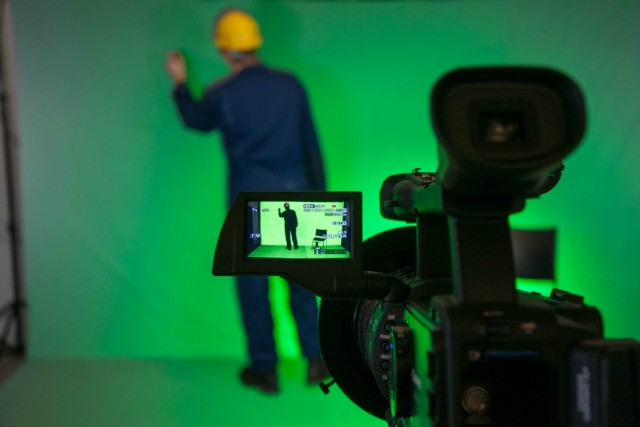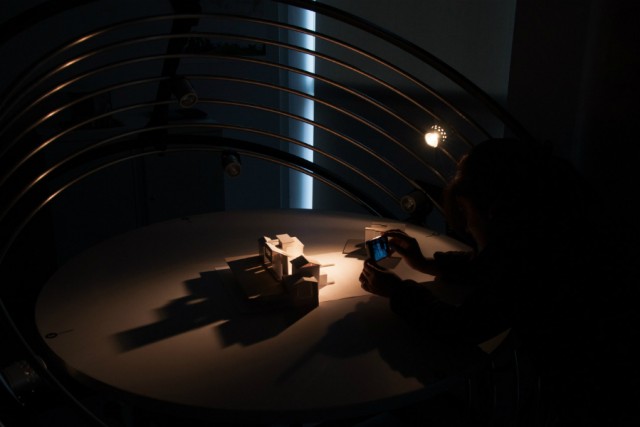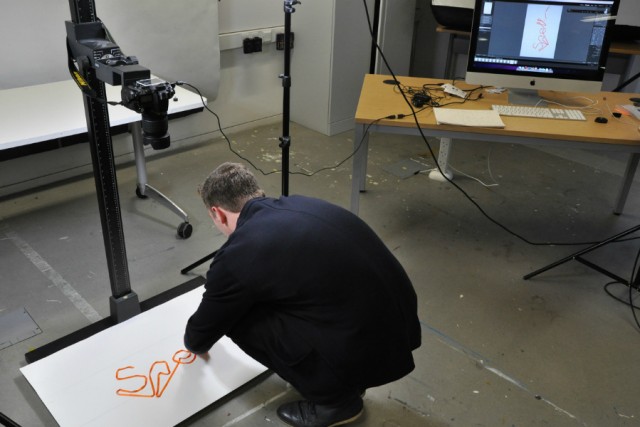Studio Series: Interactive LSAD
Software and interactive tech teacher Andy Freeney shows us around the Digital Media Studio at Liverpool School of Art and Design …
Hi Andy! Please describe your studio space.
It’s on the second floor of the LSAD, it’s 18 metres by 4 metres, and it’s basically a collection of new and emerging technologies. We help with photography, filming, projection mapping, web design, visual effects, stop-motion animation, and physical computing. I’ve done two pieces of research, one in web design and one in arduino (designed to make electronics more accessible to artists, designers and anyone interested in creating interactive objects), so support for HTML5 and The Internet of Things is also developing within in the space.
We have some high end equipment here such as a chromakey system, a Pioneer sound and vision mixer, and some DSLR bodies and lenses. We also have a Heliodon, which is mainly for Architecture students, and traces the paths of the sun at different latitudes on the planet around a 3D model. This allows you to see how building orientation and location can inform and effect its design. Architects use this to test buildings in location, and to test alternative designs that utilise the sun and reduce energy bills to create eco friendly cities, which I think is great – so you’re not freezing in the winter and baking in the summer.
What work do you here?
I provide project support to students from all courses in the use of these technologies, and in what they’re trying to achieve with them. I recently finished a teaching qualification and I’m about to start a masters in the use of computer coding within interactive media in art and design, which I hope will further develop the space. All art school students can use this studio and we really want as many as possible to come down and experiment.
How many hours a week do you spend here?
37 and a half a week. One of the days is going to be soaked up by my masters though. I’m really looking forward to getting in touch and working with FACT, maybe the Glasgow School of Art if I can, and other tech organisations like Oggcamp and DoES Liverpool.
What are your three favourite possessions in the studio?
We’ve got the newest camera from Nikon, the D800, which I picked up for video as much as photography along with a fixed 50mm Carl Ziess, so we could get some really great filming done in the building. The Heliodon is a great teaching tool which the students really like. With the lights off in the studio, the shadows it generated around the models are really stark and the models we’ve used are really diverse. We’ve got a model of the Globe Theatre here that we’ve been using as part of the Light Night sessions with the public. And anything that uses Arduino which has so many applications and possibilities!
If your studio could speak, what would it say?
It would beep! And it would say “use me”. I just want people all over Fine Art, Fashion, Graphic Design, Illustration, Architecture and Spatial Design to know about the technologies available to use within these fields, and to give them a go. Think of interesting projects – the best stuff is the messing around with equipment you haven’t used before and learning how different tech and processes can affect your work.
What helps you work?
Helping the students to realise their ideas. Accumulating knowledge. I’m able to facilitate so many different technologies here, which is great, but sometimes I think maybe I should just concentrate on one. But I get bored easily!
If you had one piece of important advice to give to aspiring makers and students, what would that be?
It depends. The learning curve is never what it seems. For some art students for example, I wouldn’t want to encourage them to give up more classical methods like painting or sculpture, but I would say just experiment if you want. If you can use this equipment in some way, it’s here along with support. For other students they just run with it. I try to make the equipment and techniques as diverse as possible. A bit of general advice: always move forward!
Liverpool School of Art and Design









